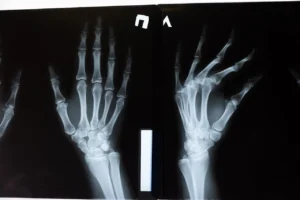
The latest Global Hepatitis Report by the World Health Organization (WHO) for 2024 reveals a concerning rise in deaths attributed to viral hepatitis. This disease now stands as the second leading infectious cause of death worldwide, claiming as many as 1.3 million lives annually, a figure equal to tuberculosis, another formidable infectious killer.
Released during the World Hepatitis Summit, the report underscores a disheartening trend: despite advancements in diagnosis and treatment tools, coupled with decreasing product costs, rates of testing and treatment coverage have hit a plateau. Nonetheless, achieving the WHO’s elimination target by 2030 remains within reach if immediate and decisive measures are enacted.
Fresh statistics from 187 countries depict a stark increase in deaths from viral hepatitis, rising from 1.1 million in 2019 to 1.3 million in 2022. Among these fatalities, hepatitis B accounts for 83%, with hepatitis C contributing to the remaining 17%. Alarmingly, 3,500 individuals succumb to hepatitis B and C infections each day on a global scale.
Dr. Tedros Adhanom Ghebreyesus, the Director-General of WHO, comments on the troubling scenario painted by the report, emphasizing the urgent need for enhanced diagnosis and treatment efforts to curb the rising death toll. WHO pledges unwavering support to nations in leveraging available tools at accessible prices to reverse this trajectory and save lives.
Updated estimates from WHO indicate that in 2022, 254 million individuals live with hepatitis B, and 50 million with hepatitis C. Half of those burdened by chronic hepatitis B and C fall within the age range of 30 to 54, with 12% of cases affecting children under 18. Men constitute 58% of all cases.
While there’s a slight decrease in new incidence rates compared to 2019, the overall incidence of viral hepatitis remains alarmingly high. In 2022 alone, 2.2 million new infections were recorded, comprising 1.2 million cases of hepatitis B and nearly 1 million of hepatitis C.
These revised estimates are based on enhanced data from national prevalence surveys, showcasing the impact of prevention measures such as immunization and safe injections, alongside the expansion of hepatitis C treatment, in reducing incidence rates.
However, significant gaps persist in diagnosis and treatment coverage globally. Only 13% of individuals with chronic hepatitis B have been diagnosed, and a mere 3% have received antiviral therapy by the end of 2022. Similarly, for hepatitis C, 36% have been diagnosed, with only 20% receiving curative treatment.
Regional discrepancies exacerbate the issue, with the African Region bearing a substantial burden of new hepatitis B infections, yet witnessing low coverage of hepatitis B birth-dose vaccination. In the Western Pacific Region, treatment coverage remains insufficient to mitigate mortality rates.
Ten countries including Bangladesh, China, Ethiopia, India, Indonesia, Nigeria, Pakistan, the Philippines, the Russian Federation, and Vietnam shoulder nearly two-thirds of the global hepatitis burden. Achieving universal access to prevention, diagnosis, and treatment in these nations, alongside intensified efforts in the African Region, is crucial to align the global response with the Sustainable Development Goals.
Persistent pricing disparities hinder access to affordable viral hepatitis medicines in many countries. Despite the availability of generic options, numerous nations still pay prices above global benchmarks, exacerbating financial burdens on health systems and patients alike.
To accelerate hepatitis elimination, the report outlines a comprehensive set of actions, including expanding access to testing and diagnostics, equitable treatment policies, strengthening primary care prevention efforts, and mobilizing innovative financing. Engaging affected communities and prioritizing research for improved diagnostics and potential cures are also emphasized.
However, funding remains a critical challenge, with current resources insufficient to meet the demands for hepatitis prevention and treatment. The report calls for increased awareness of cost-effective interventions and tools, along with strategic prioritization within global health agendas, to address funding gaps and ensure equitable access to life-saving interventions.




